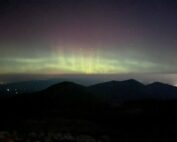Redundant Redundancy
2013-04-09 17:38:49.000 – Brian Fitzgerald, Weather Observer/Education Specialist
NULL
As you might imagine, it’s extremely important for our weather station to constantly record quality data. Here at the Mount Washington Observatory we have numerous strategies for ensuring quality and consistent data which as you might imagine can be a very difficult thing to manage for 80+ years. For each weather variable that we observe and record there are typically several instruments recording at once with several back up instruments waiting in the wings. A perfect example of this would easily be how we record temperature. Here on Mount Washington we record temperature using a either mercury-filled glass thermometers, alcohol-filled glass thermometers (for those very bitter days), several digital thermometers, and sling psychrometer. By having multiple instruments placed outside and recording we are able to get an excellent sense of variance among different thermometers, if any and also have back-ups recording in the unfortunate event that an instrument succumbs to the elements. Temperature is physically recorded into our database in a number of ways as well, including manually (an observer reads a thermometer then writes down the temperature on our METAR form), digitally (our digital database grabs temperatures from our digital thermometers), and mechanically onto our thermograph (a paper chart that can operate under zero electrical power while it records 24 hours-worth of temperature data).
Needless to say the amount of redundancy and back-up we have for temperature applies for other variables like wind speed and direction, barometric pressure, precipitation, etc., etc; however, this is not where our attention to detail ends. Error-checking and quality control is something we manage several times a day, and as one of the day observers it is my task to completely review the previous day’s observations by recreating each scenario in our databases and charts. The aim here is to make sure the data in each observation falls within certain parameters set by the National Weather Service in the FMH-1 (Federal Meteorological Handbook-1). After being checked during daily check (it’s already been checked the night before during nightly check) our data is reviewed several times after as the data slowly makes its way into monthly weather forms and longer-term resources (like our weather almanac for means and extremes). As tedious and time-consuming as this might sound, it’s incredibly important work which helps keep our long-term climate records consistent, accurate and respected in the meteorological and climatological communities who may want to use our data to ask some very interesting questions.
If you have any questions about any of our other operations, events, membership, current conditions or forecasts, definitely check out our website at MountWashington.org .
Brian Fitzgerald, Weather Observer/Education Specialist
Inside the Weather Room: How Mount Washington Observers Monitor the Atmosphere
Inside the Weather Room: How Mount Washington Observers Monitor the Atmosphere By Karl Philippoff As a weather observer on Mount Washington, we take our hourly observations on the observation deck, usually heading out between
From Weather Observer to Intern, to Observer Again
From Weather Observer to Intern, to Observer Again By Madelynn Smith As I rode in the backseat of our Obs van up the Auto Road for the first time as a full-time employee at
From Mountains to More Mountains
From Mountains to More Mountains: This Time with Stronger Winds By Alyssa Bélanger On the observation deck in high winds. Hello there! My name is Alyssa Bélanger and I am a fall




